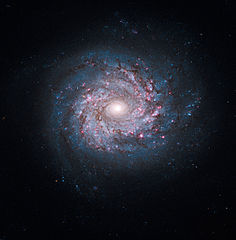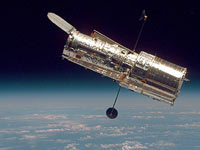What is COSMOS?
Galaxies are large collections of stars, gas, dust, and the mysterious Dark Matter. Galaxies have changed the way they look and behave over the history of the universe - since they formed after the Big Bang until now. We want to understand why.
The Cosmic Evolution Survey (COSMOS) project aims to study how galaxies are influenced by both their fundamental physical properties (nature) and the environment that surrounds them (nurture). To do this, astronomers have chosen to study a particular patch of the sky - now nicknamed the COSMOS field. As you can see in the image below, it is a large patch of sky about 16 times the size of the full moon, in the constellation Sextants. This part of the sky was chosen because it corresponds to a region where few stars and no clouds of gas in our galaxy (the Milky Way) block our view of the universe. Watch this video by ESA to find out where the COSMOS field is.
The COSMOS collaboration involves more than 100 scientists from all over the world. They have used most of the world's major telescopes on the Earth and in space to collect data in the COSMOS field. The first telescope used for this project was the Hubble Space Telescope. This is the largest patch of sky that Hubble has ever covered - it took 640 orbits of the Earth for Hubble to survey all of the COSMOS field.
Since then, data has been collected using many different types of telescopes. This includes the VLA radio telescope in New Mexico, the Very Large Telescope in Chile, Japan's Subaru Telescope in Hawaii and the XMM-Newton X-ray satellite in space. On these pages you can learn more about these different telescopes and why we need to examine all the different types (wavelengths) of light coming from the same patch of sky in order to get a better idea of what is going on in and around galaxies.














